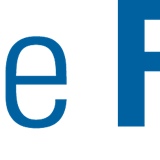Title Page
-
Site conducted
-
Client
-
Client
-
Site Name
-
Conducted on
-
Prepared by
-
Personnel
-
Site sign in Register - if available.
-
Location
-
Site Photograph - Outside view of site.
RAMS
-
Is there a Risk Assessment Method Statement (RAMS) available on site?
-
Employers are required to make an assessment of the health and safety risks to which employees and others are exposed. The significant findings must be recorded where five of more people are employed.
Specific assessments – certain regulations require risk assessments for specific hazards and state in more detail what is required. These include: COVID-19, work at height; hazardous substance (COSHH); manual handling; noise; vibration and lead.
The HSE Guidance document INDG 163 - Five Steps to Risk assessment explains how to carry out a risk assessment, this available on Safeness Vault along with Example risk assessment documents for your use. -
Location of work area:
-
No of Staff and Role:
-
Competences required for tasks:
-
RAMS documents should include the competencies required for carrying out the specific tasks. This helps demonstrate your commitment to providing appropriate training and instruction, and helps your client ensure that the individuals on site are appropriately qualified for the role they are undertaking.
Competencies could be formal training, experience or a combination of both.
There is an online based Training matrix program available through your Safeness Portal. -
Is all required Plant and Equipment listed?
-
Plant and Equipment should be listed to ensure that any training, inspection or other statutory requirements are noted and undertaken.
-
Required Materials Identified:
-
CoSHH Assessments and data sheets Identified:
-
Control of Substances Hazardous to Health (COSHH) Regulations state that a suitable and sufficient risk assessment must be carried out for any substance that has the potential to cause harm. This is known as a CoSHH assessment.
It is also a legal requirement to supply a copy of the (MSDS) Material Safety Data Sheet.
When deciding on appropriate controls the following order of priority should be used;
1 Eliminate the use of a harmful product or substance and use a safer one.
2 Use a safer form of the product, eg paste rather than powder.
3 Change the process to emit less of the substance.
4 Enclose the process so that the product does not escape.
5 Extract emissions of the substance near the source.
6 Have as few workers in harm’s way as possible.
7 Provide personal protective equipment (PPE) such as gloves, coveralls and RPE.
PPE must fit the wearer.
If your control measures include 5, 6 and 7, make sure they all work together. -
Spillage arrangements covered:
-
It is important to demonstrate that your operators know what is required to contain and deal with any spillage.
You should consider both the Environmental impact it may have on site, and any safety considerations for staff working in the area or involved in clearing up a spill. -
Waste removal considerations identified:
-
It is important to demonstrate to clients that you have arranged a suitable route to waste. including any recycling requirements. Also if there are any hazardous waste involved in the task, it is important to have clear arrangements for how this is to be dealt with.
-
Storage and Housekeeping arrangements covered:
-
Do Risk Assessments cover all hazards on site?
-
A suitable and sufficient Risk Assessment should cover all potential hazards
Regulation 3 of the Management of Health and Safety at Work Regulations 1999 requires that all employers assess the risks to the health and safety of their employees while they are at work. -
Is Noise covered, Including PPE?
-
The Control of Noise at Work Regulations 2005 require employers to ensure that risk from the exposure of his employees to noise is either eliminated at source or, where this is not reasonably practicable, reduced to as low a level as is reasonably practicable.
Exposure limit values and action values -
The lower exposure action values are—
- a daily or weekly personal noise exposure of 80 dB (A-weighted); and
- a peak sound pressure of 135 dB (C-weighted).
The upper exposure action values are—
- a daily or weekly personal noise exposure of 85 dB (A-weighted); and
- a peak sound pressure of 137 dB (C-weighted).
The exposure limit values are—
- a daily or weekly personal noise exposure of 87 dB (A-weighted); and
- a peak sound pressure of 140 dB (C-weighted). -
Is Dust covered including control measures?
-
Employers have a duty under the Control of Substances Hazardous to Health Regulations (COSHH) to ensure that the exposure of employees
to substances hazardous to health is prevented or, if this is not reasonably practicable, adequately controlled.
In order of priority the right combination of control measures could include:
(a) Eliminate the use of a harmful product or substance and use a safer one.
(b) Use a safer form of the product, eg paste rather than powder.
(c) Change the process to emit less of the substance.
(d) Enclose the process so that dust does not escape.
(e) Extract dust emissions near the source.
(f) Minimise the number of workers that are at risk.
(g) Apply suitable administrative controls, such as reducing the length of time that
workers are exposed to dust.
(h) Provide personal protective equipment (PPE) such as gloves, coveralls and a
respirator. PPE must fit the wearer. The provision of PPE, if required, should
be in addition to the measures above, not instead of. -
Has manual handling been risk assessed, and avoided or minimised by mechanical aids?
-
The Manual Handling Operations Regulations 1992 define manual handling as:
"...any transporting or supporting of a load (including the lifting, putting down, pushing, pulling, carrying or moving thereof) by hand or bodily force".
The load can be an object, person or animal.
The MHOR 1992 set out a clear ranking of measures for dealing with risks from manual handling, these are:
first : avoid hazardous manual handling operations so far as is reasonably practicable;
second : assess any hazardous manual handling operations that cannot be avoided; and
third: reduce the risk of injury so far as is reasonably practicable. -
Is Vibration covered, including assessment of vibrating tools and likely exposure?
-
The Control of Vibration at Work Regulations 2005 require that hand arm vibration should be reduced to a level that is as low as reasonably practicable (ALARP).
The hierarchy of controls applies to this area too. -
Is Work at Height covered, Including safe access method?
-
The Working at Height Regulations 2005 (WAHR) define work at height as all work where there is a risk of falling a distance liable to cause personal injury. This is regardless of the work equipment being used, the duration the person is at a height, or the height at which the work is performed. It includes access to and egress from a place of work. It would, for example, include:
Working on a scaffold or from a mobile elevated work platform (MEWP);
Working on the back of a lorry, e.g. sheeting a load;
Container top working in docks, on a ship or in a freight yard;
Arboriculture and forestry work performed in trees;
Using cradles or ropes to gain access to parts of a building, or a ship under repair in a dry dock;
Climbing permanent structures, such as gantries or telegraph poles;
Working close to an excavation area or a cellar opening, where someone could fall into it and injure themselves or others;
Painting, pasting or erecting bill posters at height;
Work on staging or trestles, for example at a concert or for filming;
Using a ladder/step ladder or kick stool for shelf filling, window cleaning, shop fitting or other maintenance tasks (e.g. changing a light bulb) -
Have any mechanical or electrical isolation identified been put in place?
-
Where isolation forms part of the safe system of work, (ie how you are protecting people from harm) they should be included in RAMS. The detail should include the type of isolation, the location at which is it to be provided, who will be responsible for carrying out the isolation and how will be responsible for proving or testing the isolation, and how.
-
Are PPE requirements clearly outlined?
-
It is important that staff have been clearly explained to what PPE requirements they require to use and for which tasks.
Be as specific as possible, you as the employer should be deciding and stating what is appropriate, not leaving it up to the work team to decide. -
Emergency Arrangements identified Confined Spaces, Work at Height, MEWP rescue etc:
-
It is a legal requirement to supply a rescue plan for the above tasks to outline how a rescue would take place in one of these high risk areas. Reliance on a response from emergency services is not sufficient as they will often not be trained or authorised to enter confined spaces or area where work at height equipment and training is required.
-
Are First Aid Arrangements Identified?
-
You should included the location of the nearest first aid kits, and the names of the individuals who are providing first aid cover for the task.
-
Pedestrian / Traffic Segregation arrangements identified?
-
The Welfare (Health Safety and Welfare) Regulations 1992 require that pedestrian and vehicle traffic is segregated where ever possible. The guidance document HSG136 explains what you should consider, this is available on Safeness Vault.
-
Fire Safety Arrangements identified?
-
You should consider fire safety when planning your works. Does you work include any heat generating tasks such as soldering, burning or grinding. If so how if will these be managed to ensure they don't cause risk of fire.
What will your staff do in the event of a fire, and how will they be told this?
Do you carry any fire fighting equipment with you in vehicles or will it be provided by the site? -
Provision of Task lighting considered?
-
You should include details of how will the task be lit. This might be by daylight or artificial lighting. Where artificial lighting is required state what type and who is responsible for it's provision and upkeep.
-
Are Young People / Apprentices considered?
-
The Health and Safety (Young Persons) Regulations 1997 require separate Risk Assessments for young persons (anyone under the age of 18) this should include details of any extra precautions required due to their age or lack of experience. This might include extra supervision or a restriction of their duties.
-
Are all parties on site signed onto the Method Statement?
-
It is important to demonstrate the the staff have read and fully understood the RAMS that they are to work to. Signing the document is a good way to record this.
-
Are COVID risks assessed appropriately?
Physical Hazards
-
Is PPE in use as called for by the Risk Assessment?
-
Required controls as recorded in the Risk Assessment should be adhered to, in failing to implement your own controls is difficult to justify in a prosecution situation. Where the anticipated control measures have not been practicable on site, this should be recorded as an amendment to the RAMS detailing what has been done instead and why.
-
Is Manual handling reduced?
-
The Manual Handling Operations Regulations 1992, as amended in 2002 - require manual handling to be reduced as far as reasonably practicable. Muskuloskeletol injuries caused by poor manual handling management/techniques cause lasting injuries that get worse over time. The regulations expect employers to use mechanical means to carry out repetitive handling tasks, unless there is a good reason not to.
-
Is Noise being adequately controlled?
-
The Control of Noise at Work Regulations 2005 -
General principles of prevention set out in Schedule 1 to the Management of Health and Safety Regulations 1999(1) and shall include consideration of—
(a)other working methods which reduce exposure to noise;
(b)choice of appropriate work equipment emitting the least possible noise, taking account of the work to be done;
(c)the design and layout of workplaces, work stations and rest facilities;
(d)suitable and sufficient information and training for employees, such that work equipment may be used correctly, in order to minimise their exposure to noise;
(e)reduction of noise by technical means;
(f)appropriate maintenance programmes for work equipment, the workplace and workplace systems;
(g)limitation of the duration and intensity of exposure to noise; and
(h)appropriate work schedules with adequate rest periods. -
Is Electrical Equipment PAT tested?
-
It is a requirement of both the Electricity at work Regulations and the Provision an use of work equipment regulations that portable electrical devices are inspected prior to use and regularly by a competent persons. These inspections should be recorded as proof.
-
Is work at height being carried out safely?
-
You must make sure work is properly planned, supervised and carried out by competent people with the skills, knowledge and experience to do the job. You must also use the right type of equipment for working at height.
While working at height the following hierarchy of control should be employed;
1. Avoid working at height completely
2. Prevent falls using a safe place to carry out work
3. Prevent falls using collective equipment
4. Use personal protective equipment (PPE): Fall restraint
5. Minimise the distance the worker could fall
6. Minimise the impact of a fall
7. Use PPE: Fall arrest
8. Minimise risk by undergoing training -
Is Scaffold is in use?
-
Does scaffolding appear safe?
-
Has it been inspected within the last 7 days?
-
Scaffolding must be inspected by a competent person every 7 days or after any event which could affect it's stability. Such events could include alterations, high winds, significant change in ground water conditions or an accidental strike of the scaffold.
-
Was scaffold erected by a competent person?
-
Scaffolding must be erected by a competent persons to a recognised configuration. This would usually either by a system scaffold such as cuploc or quick stage, or a tube and fitting design from the TG20:13 series. Any structure which falls outside this range must have a bespoke design carried out by a competent Temporary works designer.
-
Are ladders inspected and in good condition?
-
Ladders should be checked on a regular basis by a Competent person to prevent extra hazard from poor quality or poorly maintained access equipment. They should also be inspected by the user before use.
-
Is lifting equipment subject to LOLER examination?
-
The Lifting Operations Lifting Equipment Regulations 1998 - require all equipment and accessories involved in the lifting of equipment to under go a yearly inspection by a competently trained person. Any Equipment which is involved in lifting people and all lifting accessories (strops and shackles etc) require a 6 monthly inspection.
Plant and Equipment
-
Do Operatives have certification for plant or equipment in use?
-
Are vehicles in roadworthy condition?
-
All though the road worthiness of a vehicle is the responsibility of the driver under the road traffic act, a vehicle provided for work is also treated as a piece of work equipment. As such, under the health and safety at work act, the maintenance of that vehicle in a roadworthy condition is the responsibility of the employer.
Drivers should be asked to inspect work vehicles for condition prior to driving, and these reports should be retained. -
Are guards in place on all equipment with rotating parts?
-
Provision and Use of Work Equipment Regulations (PUWER) requires all manufacturer's guarding to be in place whilst equipment/tools are in use. In general, all rotating blades should have an automatic retracting blade and an automatic brake. All rotating parts should be fully guarded to prevent entrapment. All lathes and pillar drills should have a chuck guard fitted.
-
Is Plant subject to Pre-Use checks?
-
Plant equipment should be inspected for condition by the operator prior to operation. The inspection should be taylored to suit the piece of equipment in question, however is should include visual inspection of the condition of moving parts and the presence and operation of any safety features such as mirrors, warning beacons and brakes.
Example forms are provided in Safeness Vault which include a selection of example plant pre-use inspections
CoSHH
-
Is Dust being adequately controlled?
-
The Control of Substances Hazardous to Health (COSHH) Regulations require that employers control dust whereever it is created. Remember that PPE should only be considered as a control measure as a last resort. Measures, such as reducing the emissions of dust at source, enclosing the source and removing the dust by effective local exhaust ventilation (LEV) should always be given first priority.
It is the expectation of the HSE that dust extraction at source is used on all dust creating equipment.
There is extensive information from the HSE on dust in Safeness Vault. Key documents are INDG463 0 Control of exposure to silica dust and CIS36 Construction Dust. -
Is dust extraction equipment in use?
-
It is the expectation of the HSE that dust is extracted at source where no non dust producing alternative is available.
This must then be either extracted to outside, or filtered to with an M or N Class filter. -
Are CoSHH assessments present for all hazardous substances present?
-
The Control of Substances Hazardous to Health (COSHH) Regulations require employers to assess the risk to their employees, and to prevent or adequately control those risks.
HSE Guidance "INDG 136", which is available on Safeness Vault, is a good source of further information on this. -
Are all control measures called for in the CoSHH assessment in place?
-
You must implement the control measures identified in CoSHH Risk Assessments, failing to do so may leave you open to danger and prosecution.
-
Is RPE face fit tested where required?
-
Where tight fitting Respiratory protective equipment (RPE) is in use, the protection afforded to the user must be proved by way of a fit test. This can take the form of a qualitative or quantitative face fit test. Test certificates should be retained by the employer, and tests should be repeated at regular intervals or after any change in the type of RPE or change in the face of the wearer.
It is unlikely that anyone with facial hair will pass a face fit test, and at any rate it reduced the effectiveness of the seal. As such it is a requirement that wearers of tight fitting RPE are clean shaven in the area with which the mast seals.
Hand Arm Vibration Management
-
Are Vibration exposure controls being adhered to? As outlined in the RAMS?
-
The Control of Vibration at Work Regulations 2005 require that employee exposure to vibration should be reduced to a level that is as low as reasonably practicable (ALARP). To do this the lowest vibration level of technology should be used, the lowest vibrating tool in it class should be used and the exposure of each individual to the tool should be monitored to ensure that it as low as possible.
-
Is there accurate vibration magnitude levels available to personnel on site for the tools in use?
-
In order to comply with the Control of Vibration at Work regulations 2005, the employer and user should know what the vibration magnitude of the tool they're using is, so they can calculate their exposure.
-
Is there a vibration exposure log or Havi Monitors in use?
-
In order to prove that vibration is controlled to a level which is as low as is reasonably practicable, records should be kept of each individual's exposure.
Tool Check
-
Is tool PAT Tested
-
It is a legal requirement that all mains voltage equipment is inspected regularly by a competent person. The easiest way to evidence this by arranging for a Portable Appliance Test (PAT for short).
-
Does tool have its vibration control measures intact
-
Any anti vibration feature of tools which is provided by the manufacturer must be maintained in good working condition in order to maintain the vibration reduction features of the tool and thus the vibration magnitude figures provided by the manufacturer. This includes damping rubbers, hand grips, balancing of rotating tools and any other feature designed to limit vibration experienced by the user.
-
Are all guards and brakes in place as required?
-
The Provision and Use of Work Equipment regulations requires that moving parts of work equipment be guarded to prevent the user, or anyone else, coming into contact with them. Guidance on these regulations require that certain types of high speed rotating tools come to a stop within a certain time of being switched off.
Emergency Arrangements
-
Is there a plan for emergency situations on site?
-
There must be a plan for foreseeable conditions of serious or imminent danger, this should include fire , first aid and spill response.
-
Are Staff familiar with Site Safety arrangements?
-
It is important that the site safety arrangements are conveyed to your workforce. This is usually done via the media of an induction which could be at site or company level.
Environmental
-
Are there chemical substances on site which could pose a hazard if spilled?
-
Is there a plan for action in case of a spillage or uncontrolled release?
-
Organisations must ensure that there is a plan for abnormal conditions such as a fault or uncontrolled release of any harmful substance which is under its control. The type and complexity of the plan should be proportionate to the quantity, type and hazards posed by the chemical substances stored.
-
Is there equipment on site to deal with any spill of chemical substances held?
-
Any equipment identified as being required to contain or clean up a spill should be provided and made available at a convenient location close the point where it may be needed. The equipment should be appropriate to the amount and type of substances present on site.
-
Have staff been trained on the spill response plan and any equipment provided to be used in the event of a spill?
-
Staff should be trained and competent of any tasks which they may be required to carry out as part of their employment. This includes emergency situations and the use of any equipment provided for their use in such situations, such as fire extinguishers, spill response kits etc
-
Audit Report Sign off













